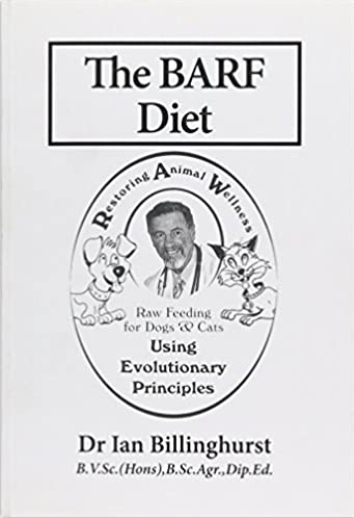
Understanding the Meaning of a Barf Diet
[ez-toc]
So, have you ever heard of the Barf diet for dogs? It may sound a bit strange at first, but stick with me here. We’re going to dive into the world of natural raw food for our furry friends. You’re probably wondering, what exactly does “Barf” mean in this context? Well, it stands for “Biologically Appropriate Raw Food” or “Bones and Raw Food.” Interesting, right? In this article, we’ll explore the ins and outs of the Barf diet, looking at everything from the benefits to the different options available. By the end, you’ll have a better understanding of what this diet is all about and whether it might be a good fit for your pup.
At first glance, the term “barf diet” might seem unappetizing or unpleasant. However, this diet has gained popularity among dog owners who are seeking a more natural and healthy approach to feeding their furry friends. Barf diet, also known as “biologically appropriate raw food” or “bones and raw food,” is a feeding regimen that includes raw ingredients such as meat, bones, organs, vegetables, and supplements. In this article, we will delve into the various aspects of the barf diet, discussing its benefits, drawbacks, components, preparation guidelines, transitioning process, effects and outcomes, suitability for different life stages, addressing concerns and misconceptions, expert opinions and studies, as well as success stories.
Introduction to Barf Diet
The barf diet is rooted in the belief that dogs descended from wolves and, as such, thrive on a diet similar to what their ancestors consumed in the wild. Advocates for this diet argue that dogs are biologically designed to eat raw, whole foods, and that a diet comprised mainly of highly processed commercial dog foods can negatively impact their health and well-being. The barf diet seeks to replicate a dog’s natural diet, providing them with a range of nutrients in their most natural form.
Benefits of Barf Diet
Proponents of the barf diet often cite a variety of potential benefits for dogs that follow this feeding regimen. One of the main advantages is improved digestion. Due to the lack of artificial additives and preservatives, dogs on the barf diet may experience fewer digestive issues such as bloating or gas.
Another benefit is enhanced dental health. Chewing on raw bones as part of the diet can help naturally clean a dog’s teeth by reducing plaque and tartar buildup. This can lead to improved oral hygiene and reduce the risk of periodontal disease.
Additionally, a barf diet has the potential to contribute to a vibrant coat and healthy skin. The inclusion of essential fatty acids, vitamins, and minerals from natural food sources can promote a shiny, lustrous coat and alleviate common skin issues like dryness or itching.
Lastly, many dog owners report increased energy levels in their pets after switching to the barf diet. The high protein content provided by raw meat and organs can give dogs the necessary fuel for an active and energetic lifestyle.
Drawbacks of Barf Diet
While the barf diet has gained popularity and has its supporters, it is important to consider the potential drawbacks as well. One concern is the risk of bacterial contamination from raw meat. Proponents of the barf diet recommend using high-quality ingredients and practicing proper food handling and hygiene to minimize this risk.
Another drawback is the need for careful balancing of nutritional needs. This is especially important when it comes to calcium and phosphorus levels, as an imbalance can have negative effects on a dog’s development and health. Ensuring a well-rounded and balanced diet is crucial when feeding barf.
Allergic reactions to certain ingredients are also a possible drawback. Just like humans, dogs can have food sensitivities or allergies, and it can be challenging to pinpoint the specific ingredient that is causing the reaction in a barf diet. Gradual introduction and monitoring can help address any allergic issues that may arise.
Components of the Barf Diet
To understand the barf diet in its entirety, let’s take a closer look at the various components that make up this feeding regimen.
Meat
The foundation of the barf diet is raw meat. It is recommended to use a variety of meats, such as beef, chicken, turkey, and fish, to provide a range of nutrients. The meat should ideally include muscle meat as well as some connective tissue and fat. It is important to source high-quality, human-grade meat to ensure safety and nutritional value for your dog.
Bones
Raw bones, such as chicken wings or beef knuckles, are an essential component of the barf diet. They provide essential calcium and phosphorus for bone health and support dental hygiene by naturally cleaning a dog’s teeth. It is crucial to choose appropriate-sized bones for your dog to prevent choking or dental injuries.
Organs
Organs, including liver, kidney, heart, and spleen, are packed with vital nutrients like vitamins, minerals, and enzymes. Including a variety of organ meats in the barf diet ensures a well-rounded nutrient profile.
Vegetables
While dogs are primarily carnivorous, their ancestral diets would have included some plant matter consumed through the stomach contents of their prey. Including a small amount of vegetables in the barf diet can provide additional fiber, antioxidants, and vitamins. Popular choices include leafy greens, carrots, and pumpkin.
Supplements
To round out the nutritional needs of a dog on the barf diet, certain supplements may be added. Common supplements include fish oil for omega-3 fatty acids, probiotics for gut health, and joint supplements for older dogs or those with joint issues. It is important to consult with a veterinarian to determine which supplements are necessary for your dog.
Preparation and Guidelines for Barf Diet
To ensure the safety and effectiveness of the barf diet, it is crucial to follow proper guidelines during food preparation and storage.
Choosing the Right Ingredients
When selecting ingredients, opt for high-quality, human-grade meat and organic produce whenever possible. This ensures that your dog is receiving the best possible nutrients without the risk of harmful substances or additives.
Balancing Nutritional Needs
Properly balancing the nutritional needs of your dog is essential when feeding the barf diet. It is recommended to consult with a veterinarian or a veterinary nutritionist to determine the right proportions of meat, bones, organs, and vegetables for your specific dog. This helps to prevent potential deficiencies or imbalances.
Food Preparation and Storage
When preparing the barf diet, it is important to follow good hygiene practices. Thoroughly clean all utensils, surfaces, and your hands before handling raw ingredients. Storage of raw meat and bones should be done in sealed containers in designated areas of the refrigerator or freezer to prevent cross-contamination.
Transitioning to the Barf Diet
Transitioning your dog to the barf diet should be done gradually to avoid digestive upset. Start by introducing a small amount of raw food alongside their regular diet and gradually increase the proportion of raw food over time. Monitor your dog’s stools, energy levels, and overall well-being during this transition period. Adjustments may need to be made, such as altering the ratio of ingredients or introducing new ingredients slowly.
Effects and Outcomes of Barf Diet
Once fully transitioned to the barf diet, dog owners often report a range of positive effects and outcomes in their pets.
Improved Digestion
Due to the absence of artificial additives and the inclusion of natural, easily digestible ingredients, dogs on the barf diet may experience improved digestion, resulting in fewer gastrointestinal issues.
Enhanced Dental Health
The chewing and gnawing on raw bones can help naturally clean a dog’s teeth, reducing the risk of plaque and tartar buildup. This can lead to improved oral hygiene and a healthier mouth overall.
Vibrant Coat and Skin
The nutrients obtained from the variety of raw ingredients in the barf diet, such as essential fatty acids and vitamins, can promote a shiny, healthy coat and alleviate common skin issues.
Increased Energy Levels
The high protein content in the barf diet provides dogs with fuel for an active and energetic lifestyle. Many dog owners report an increase in their pet’s energy levels after transitioning to this feeding regimen.
Barf Diet for Different Life Stages
The barf diet can be tailored to meet the nutritional needs of dogs at various life stages.
Barf Diet for Puppies
When feeding barf to puppies, it is important to ensure they receive the necessary nutrients for growth and development. Consultation with a veterinarian is crucial to determine the appropriate proportions of ingredients and supplements required for their specific needs.
Barf Diet for Adult Dogs
Adult dogs can thrive on the barf diet, as it provides a well-rounded nutrient profile, promotes good health, and allows for individual customization based on their activity level and overall health.
Barf Diet for Senior Dogs
Senior dogs can also benefit from the barf diet. Adjustments may be necessary to meet their changing nutritional needs, such as increasing joint supplements or using softer bones for dental health.
Addressing Concerns and Misconceptions
Despite the increasing popularity of the barf diet, there are concerns and misconceptions that need to be addressed.
Risk of Bacterial Contamination
Raw meat can carry bacteria such as Salmonella or E. coli, which can pose a risk to both dogs and humans. It is crucial to handle raw ingredients safely and practice good hygiene to minimize risks. It is also important to source high-quality, human-grade meat to reduce the probability of bacterial contamination.
Calcium and Phosphorus Levels
Maintaining the correct balance of calcium and phosphorus in a dog’s diet is vital for bone health. Careful selection and preparation of bones can help achieve this balance. Consulting with a veterinarian or a veterinary nutritionist can provide guidance in determining the appropriate proportions.
Allergic Reactions
Just like humans, dogs can have food sensitivities or allergies. The barf diet presents a challenge in identifying the specific ingredient causing the allergic reaction. Gradual introduction and monitoring can help identify and address any allergic issues that may arise.
Expert Opinions and Studies on Barf Diet
When considering any diet change for your dog, it is essential to gather information from a variety of sources, including expert opinions and pertinent studies.
Veterinarian Perspectives
Opinions among veterinarians on the barf diet can vary. Some veterinarians support the diet, while others express concerns about the potential risks and nutritional imbalances. Discussing the barf diet with a trusted veterinarian can help provide guidance specifically tailored to your dog’s needs and health status.
Research Findings
There is limited scientific research specifically focused on the barf diet for dogs. However, some studies have investigated the effects of raw food diets on certain health parameters in dogs. These studies suggest potential benefits such as improved dental health and reduced risk of obesity. Further research is required to establish more concrete conclusions.
Clinical Trials
Clinical trials involving barf diets for dogs are minimal. However, researchers have begun to explore the effects of raw diets on specific canine health conditions, such as allergies and inflammatory bowel disease. These trials provide valuable insight into the potential benefits of the barf diet in managing certain health conditions.
Barf Diet Success Stories
Dog owners who have successfully switched their pets to the barf diet often have their own success stories to share.
Real-Life Experiences
Many dog owners claim to have observed positive changes in their pets after transitioning to the barf diet. Their stories often highlight improvements in coat condition, energy levels, digestive health, and overall well-being.
Pet Owner Testimonials
Online communities and forums provide a platform for dog owners to connect and share their experiences and testimonials regarding the barf diet. Reading or engaging with these conversations can provide valuable insights and support for those considering this diet for their dogs.
Conclusion
The barf diet offers a natural and healthy approach to feeding dogs and puppies, aiming to replicate their ancestral diets. While it has its benefits in terms of improved digestion, dental health, coat condition, and energy levels, it is important to consider potential drawbacks, such as the risk of bacterial contamination and the need for careful nutritional balancing. Transitioning to the barf diet should be approached gradually and with the guidance of a veterinarian. Consulting with experts, being aware of research findings, and considering the experiences of other dog owners can assist in making an informed decision about whether the barf diet is suitable for your furry friend. Remember that each dog is unique, and what works for one may not work for another. Ultimately, understanding the meaning of the barf diet is about making an informed choice that promotes the health and well-being of your beloved canine companion.



